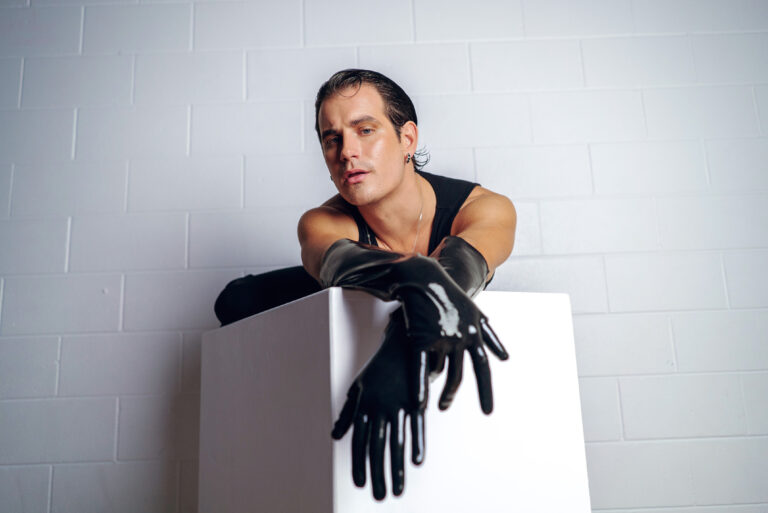Conflict-resolution strategies for high school dance class
Kelly Berick’s students know how much their attitudes affect their overall grades.
As teachers, we’ve seen it all. The flushed cheeks and scowls that signal the start of an argument between a couple of kids, the teary-eyed student and the resentful dancer with an attitude. Conflicts in the classroom can take on a wide variety of forms—arguments between students, inner turmoil and push-back from a student toward a teacher.
While these moments may be daunting, you don’t have to be an expert in conflict resolution to keep order in your class. “As dance teachers we have a unique set of skills. We can help kids understand how to navigate relationships and show them how powerful the body and body language can be,” says Dr. Nancy Beardall, who has created dance-based conflict resolution curricula in Newton, Massachusetts, and coordinates Lesley University’s dance therapy program.
No aspect of addressing conflict prevention in the classroom is too superficial, Beardall says. You can incorporate as much into your dance classes as you’re comfortable with, and it doesn’t have to detract from your already limited class time. After all, you’re teaching dance—not communication. Use these strategies to help students navigate tricky relationships while gaining the tools they need to become stronger artists.
COMMUNICATE EXPECTATIONS
The first step to prevent conflict from boiling over is to set clear rules and communicate them to students. Kelly Berick, a teacher at Firestone High School in Akron, Ohio, believes that transparent grading policies (in which the students understand the factors, including attitude, that affect their grade) and established classroom procedures help develop a safe environment for the kids.
“I put in the rubric for my movement class that 30 percent is attitude,” she says matter-of-factly. “And we talk about that in the early weeks—what happens to the climate of the classroom when you laugh at a classmate.”
But in a class of teenagers, conflict inevitably erupts. “High school kids don’t deal with conflicts like adults,” she observes. “If I have colleagues who want to do a project one way and I want to do it a different way, we converse about it. But my teenagers aren’t able to do that. Conflicts don’t end up being about the difference of opinion, but about the poorly executed way of communicating that different idea.”
Berick often moves to end discord immediately, particularly if she feels it disrupts the flow of class. But if she can, Berick prefers to handle conflicts after everyone has taken a breath. “Then, I can think about a strategy,” she says. “If a student confronts me, I usually go to her later and quietly ask, ‘Is everything OK?’ That shows my concern rather than anger. My strategy is to remove the audience and deal with the problem one-on-one, but I can’t do anything without listening.”
EXAMINE PERSONALITY TRAITS
Developmental stage impacts how well kids cope with conflict, and Christopher Rutt, who teaches dance to both boys and girls at the New Trier Township High School outside Chicago, also says that there’s a distinct difference in the ways boys and girls handle conflicts.
“It seems to me that teenaged girls define themselves through relationships, so any conflict is seen as a real negative thing,” he says. “Guys deal with conflict quickly in a very goal-oriented way, but girls cannot move forward until they negotiate who will lead or follow.”
Rutt likes to turn these differences into teachable moments that will eventually help build teamwork and problem-solving skills. In his hour-and-15-minute dance lab, he often precedes group work with an exercise in identifying personality types: the big-picture person, the detail-oriented one, the empathizer and the dive-right-in personality.
“We look at those the kids relate to most, and those that best describe them,” he explains. “Most kids are a combination of those types, and we talk about that. They start to realize that they have to get in tune with where each person in the group is coming from. They learn that it’s not a matter of somebody being stubborn just for the sake of being stubborn or sabotaging a project—they’re just looking at it from a different perspective. Students also figure out that working with a diversity of traits makes for a rich project.”
TEACH NONVERBAL CUES
Helping students to identify the precursors to a conflict is a critical step. Erica Rose Jeffrey—who is researching the integration of conflict-resolution skills with movement exercises at the University of Queensland in Brisbane, Australia—teaches kids about nonverbal communication by having them look at body language: the tone and volume of movement, and the distance between people.
“Those things really relate well to shape,” she says. “How does someone move in an argument? How do they get into that argument? Are they going around in circles? And then, taking the words and emotions out of it, what does that feel like in movement?”
Jeffrey cites the work of Anne Green Gilbert, founder of the Creative Dance Center in Seattle. She uses Gilbert’s chopstick exercise—in which two people try to move together, each with a palm on one end of a chopstick—as a way to have students work on cooperation and communication skills in a nonverbal context.
“It’s fun because it’s a bit of a challenge,” says Jeffrey. “You really have to work together to remain connected, but it’s without touching. You can use it to explore the idea of relationships and shifts by having the partners change who’s leading and who’s following.”
SELF-REFLECTION
Beardall often instructs students to use movement to explore scenarios that imply connection: moving together or working in cooperation, for example. Similarly, they’ll explore disconnection and reconnection. The students observe each other enacting what she calls “silent movies,” and then as a group they process their experience.
Beardall asks students about the qualities they saw, how the experience felt and what it could lead to. “What is so powerful about this is that it’s embodied, not pulled from the cognitive brain,” she says. “They’ve seen it, they’ve moved it, they’ve reflected on it—and it can lead to incredible dialogues. Instead of focusing on the conflict, we can focus on relationships and learn to navigate them.”
Exploring these ideas in a movement context can be powerful, but Jeffrey points out, “You have to bring it back to the idea of how that would look in real life—what would you say, how could you use this, or what might you do differently,” she says. “It’s key to help people learn to identify for themselves when something is escalating or happening, and how to step away from it.” DT
JUST CALM DOWN
Abigail Agresta-Stratton, president of the board of the New York State Dance Education Association, developed the dance program for West Islip High School. Here, she gives three exercises to de-escalate contentious moments in class.
1) Clean the air: “Like Martha Graham said, you have to have the courage to let all the air out of your body to let fresh air in. So, we’ll work on contraction and release to get students centered. Then, have students focus on thinking of their breath as a color. It takes their mind off of whatever is going on.”
2) Create new pathways: “If I sense a lot of animosity in the room, I’ll have my students create a dance with zigzag pathways. Then I ask them, ‘Are there lots of angles, stops, turns? How does that feel in your mind or in your body? What about a path that is curvy and smoother?’ We talk about how to navigate between people, about the boundaries and how that feels. And then we can use that to talk about whatever is going on.”
3) Role-play: “If you see a conflict between students whom you know well, call on some other students who are outside the conflict to role-play and act out the scenario. Of course, students have to do it in a sensitive and respectful way, so that it doesn’t look like a mockery. It enables the students in conflict to step away from the issue and really see what’s going on.”
Mary Ellen Hunt is a former dancer, now teacher, in San Francisco.
Photo by Stephen Csejtey, courtesy of Firestone High School



